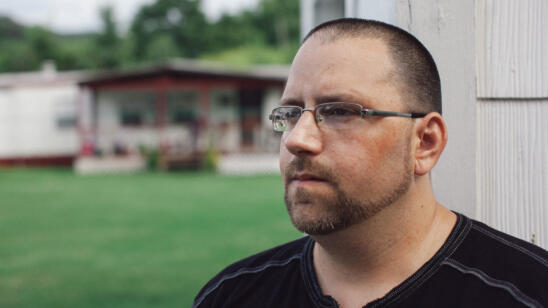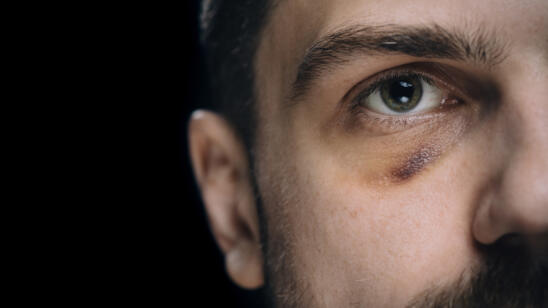The defendant, 22-year old Brandon Joyner, was charged with assaulting his 60-year old neighbor, David Turner, leaving him paralyzed and unable to speak. Joyner, the subject of Season 1, Episode 3 of A&E’s series, “Accused: Guilty or Innocent?“, claimed he acted in self-defense—that Turner was drunk, belligerent and abusing his own disabled son-in-law when Joyner intervened.
Whether Joyner would walk away free or spend up to 20 years in prison would hinge on the state where the incident occurred and other more subjective factors in the murky, quirky and still-evolving world of self-defense laws in the United States. Joyner was ultimately found not guilty.
[Stream episodes of Accused: Guilty or Innocent? in the A&E app.]
English Precedents
The idea that people have a right to defend themselves—even using force that would otherwise be illegal—harks back centuries to English common law, which formed the basis of the American legal system. Historically, that right presumed a “duty to retreat”—the person being threatened had to try to escape the situation before forcibly responding. As far back as the 1600s, English common law also recognized what’s known as the “Castle Doctrine,” which says a man has a right to defend his home from intruders with no duty to retreat.
Those concepts are recognized in all U.S. states, either in written statutes or decades of court rulings—with some conditions. In general, someone who uses force in self defense (or in defense of others) must show that the danger was imminent, not something that happened in the past or might in the future. The fear of harm must be reasonable. The force must be a reasonable response to the threat. And the accused can’t have caused the threatening situation in the first place.
“You can’t rob a 7-Eleven and then shoot the owner when he pulls out his gun and claim it was self-defense,” says Luke Shealey, a criminal defense attorney in Columbia, S.C.
The Rise of ‘Stand Your Ground’ Laws
Juries aren’t always consistent, however, on whether those conditions have been met.
In the celebrated 1984 “Subway Vigilante” case Bernhard Goetz shot four unarmed Black youths he claimed were menacing him on a New York City subway. At the time, many New Yorkers were frustrated with the city’s high crime and lack of police response. Even though Goetz fled the scene, disposed of his gun and later told police he would have kept on firing if he had had more bullets, a largely white jury convicted him only on a weapons charge.
Starting with Florida in 2005, more than 30 states have passed so-called Stand Your Ground laws that dramatically expand self-defense rights. They generally allow citizens who fear they are under threat to use lethal force, with no duty to retreat, anywhere they have a legal right to be. In many of those states, if a judge agrees in a pre-trial hearing that the accused acted in self-defense, he or she wins immunity from prosecution and the case never goes to trial.
Stand Your Ground laws came under widespread scrutiny in 2012, when Trayvon Martin, a 17-year-old African American, was fatally shot walking back to his father’s home in a condo complex in Sanford, Fla. George Zimmerman, a 28-year-old neighborhood watch volunteer, thought the hoodie-clad teenager looked suspicious and called 911. Zimmerman got out of his car and followed Martin on foot, against the dispatcher’s orders. He said Martin turned on him, slamming his head into the sidewalk, and that he feared for his life when he shot the teen. Martin was later found to be carrying only a can of iced tea and a bag of Skittles.
Accepting his account, police didn’t arrest Zimmerman for six weeks, until the case had sparked national outrage and charges of racial profiling. Zimmerman’s attorneys opted not to seek immunity under Florida’s Stand Your Ground law and argued a standard self-defense case at trial. But as required by the law, the judge instructed the jury that Zimmerman had no duty to retreat and could use lethal force if he felt threatened. The all-female jury acquitted him on all charges.
Increased Violence and Baked-in Biases
Despite ongoing controversy over the law, the Florida legislature expanded it in 2017, requiring prosecutors to prove that the defendant’s perception of threat is not reasonable. A year later, the Florida Supreme Court ruled that police officers who feel threatened can also use lethal force under the Stand Your Ground law. The case involved a Broward County Sheriff’s Deputy who fatally shot a man carrying an air rifle; the victim didn’t hear the cops’ order to stop because he was listening to music with earbuds. In many other states, use of force by police is covered by other laws.
Critics say Stand Your Ground laws foster an atmosphere of “shoot-first, ask questions later” and have escalated many disputes that could have been solved peacefully into lethal confrontations. Florida homicides rose 24 percent after its Stand Your Ground law was enacted, according to one 2016 study.
Harvard historian Caroline Light argues in her 2017 book, Stand Your Ground: A History of America’s Love Affair with Lethal Self-Defense, that even if self-defense laws appear to apply equally to everyone, they have historically benefited white, property-owning men far more than minorities and women. For centuries, women couldn’t own property and white settlers intrinsically viewed nonwhites as menacing. Critics say that today’s Stand Your Ground laws that hinge on what a “reasonable person” would perceive as a threat have turned prejudice into precedent and fear into a rationale for murder.
“The perception of threat is in the eye of the beholder,” Light tells A&E True Crime. “Our social, political, economic and cultural biases are baked into how these laws are adjudicated.” A 2012 study of FBI data found that in states with Stand Your Ground laws, Caucasians who kill African Americans are 17 times more likely, on a percentage basis, to escape conviction than African Americans who kill Caucasians.
Women who fight back against abusive partners also face an uphill battle in court. “Women end up getting characterized as angry rather than fearful,” which can undercut a self-defense claim, Light says. Even the so-called “battered woman defense” rests on the argument that women who suffer from long-term spousal abuse lose their capacity to think rationally.
Unintended Consequences
Shealey says Stand Your Ground laws have had some unintended consequences. A pre-trial self-defense hearing amounts to a mini-trial where both sides lay out their evidence. Even if the judge declines to grant immunity, prosecutors may be more willing to offer a plea bargain than risk having a jury be more sympathetic. What’s more, Shealey says, public defenders are increasingly using Stand Your Ground laws to file self-defense claims on behalf of their indigent clients. “It’s unleashed a lot of extra work for the courts, which the courts hate,” he says.
Still, asserting a self-defense claim can be risky. Lawyers have to concede their clients pulled the trigger or assaulted the victim, rather than forcing prosecutors to prove it beyond a reasonable doubt. Defendants usually need to testify—there’s often no other evidence—which allows prosecutors to bring up any prior criminal records.
And for all the publicity the cases attract, successful self-defense claims remain rare. An analysis of FBI data published in October 2019 found that only about 2 percent of the 215,000 homicides involving firearms in the U.S. between 2000 and 2017 were ruled justifiable on the grounds of self-defense.
Related Features:
When Abuse Victims Strike Back—With Murder


